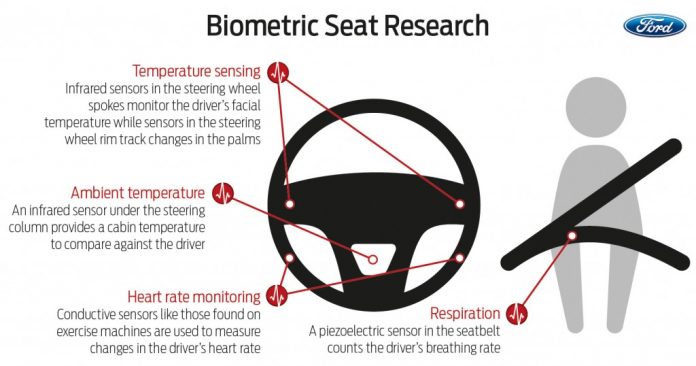“Ford wants to shut off access to your cellphone and texting while driving but only when the highway is jammed and you’ve got enough to do already. Biometric sensors in the seat and steering wheel measure stresses on the driver, while sonar, radar and cameras measure traffic flow around the car. The data feeds into a “driver workload estimator” algorithm that determines when you, personally, reach sensory overload. It temporarily sets a Do Not Disturb flag on your cellphone; inbound calls are shunted to voicemail and texts aren’t announced.”
My Take: I was very impressed by what Ford was able to do, and respect them for thinking outside of the box to tackle this issue. Not only is one of the world’s major car companies making an effort to end distracted driving, like Apple and Google have started working on in the tech field, but they are also incorporating new technology to measure the wellbeing of the passengers. They have acknowledged the presence of a sensory overload. They have broken down human distraction into an equation, and I believe they can apply their findings to multiple fields aside from phones and driving.




